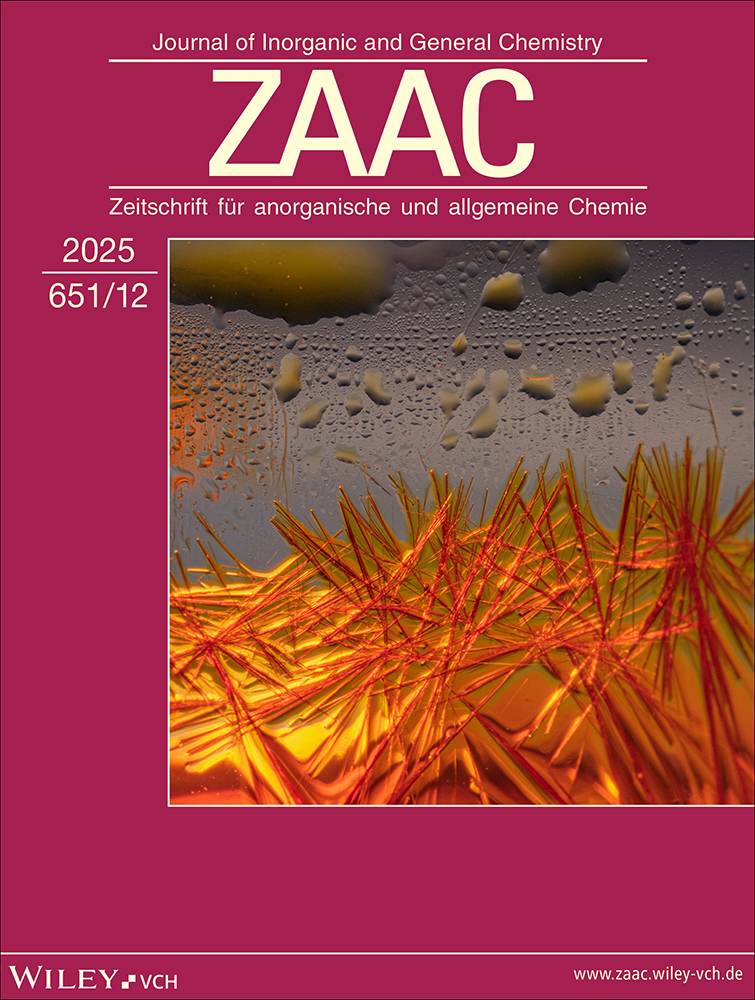Synthese und Kristallstruktur von dimerem Dipyrazoldipyrazolato-platin(II), [Pt(pz)2(Hpz)2]2†
Professor Klaus Brodersen zum 60. Geburtstage am 12. August 1986 gewidmet
Abstract
deDer dimere Komplex [Pt(pz)2(Hpz)2]2 (Hpz = Pyrazol) entsteht in wäßriger Lösung aus [Pt(Hpz)4]2+ durch Zugabe von OH− oder pz−. Die in Wasser unlösliche, farblose Verbindung zersetzt sich bei 191°C in Pt(pz)2. Sie kristallisiert monoklin in der Raumgruppe C2/c mit den Gitterkonstanten a = 2 165,5, b = 972,0, c = 1 648,4 pm, β = 123,09°, Z = 4. Jedes Pt2+-Ion ist von zwei Hpz-Molekülen und zwei pz−-Anionen quadratisch-planar koordiniert. Die Dimerisierung erfolgt über vier symmetrische NHN-Brücken zwischen den Hpz- und pz−-Liganden beider Pt-Atome, so daß ein vollständiger Ladungsausgleich zwischen den Liganden erreicht wird. Der Komplex besitzt die Symmetrie C2, wobei zwei der Brücken-H-Atome auf der Symmetrieachse liegen. Die PtN-Abstände entsprechen mit 200 pm kovelanten Einfachbindungen. v(NH) wird bei 2 400 cm−1 als breite Absorption beobachtet.
Abstract
enSynthesis and Crystal Structure of Dimeric Dipyrazole Dipyrazolato Platinum(II), [Pt(pz)2(Hpz)2]2
The dimeric complex [Pt(pz)2(Hpz)2]2 (Hpz = pyrazole) is obtained in water from [Pt(Hpz)4]2+ and OH− or pz−. The colorless compound is insoluble in water. It decomposes at 191°C to form Pt(pz)2. [Pt(pz)2(Hpz)2]2 crystallizes in the monoclinic space group C2/c with the lattice constants a = 2 165.5, b = 972,0, c = 1 648.4 pm, β = 123.09°, Z = 4. Each Pt2+ ion is coordinated in a square-planar arrangement by two Hpz molecules and two pz− anions. The dimeric complex is formed by four symmetrical NHN bridges between the Hpz and pz− ligands of both Pt atoms causing a complete charge delocalization between the ligands. The complex has the symmetry C2 with two of the bridging H atoms lying on the symmetry axis. The PtN distances of 200 pm correspond to covalent single bonds. v(NH) is observed as broad absorption at 2 400 cm−1.




